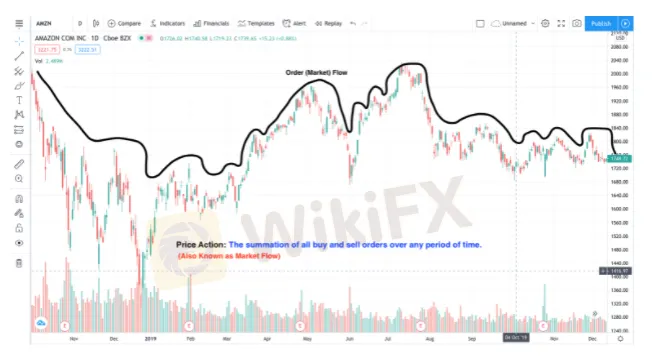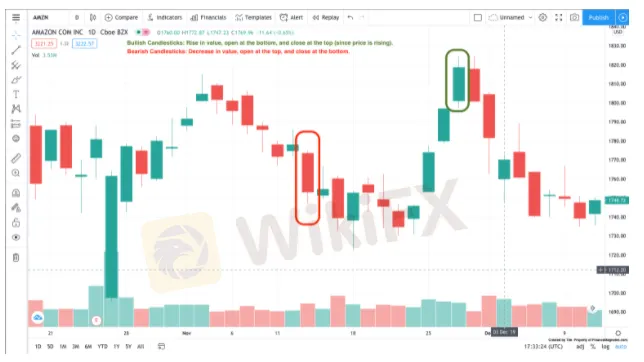简体中文
繁體中文
English
Pусский
日本語
ภาษาไทย
Tiếng Việt
Bahasa Indonesia
Español
हिन्दी
Filippiiniläinen
Français
Deutsch
Português
Türkçe
한국어
العربية
The Basics of Forex Trading
Abstract:First-time traders are often overwhelmed with trade terminology when beginning in forex.

Todays publication aims to enlighten you regarding the building blocks of forex trading . Familiarizing yourself with forex basics empowers you as an investor to make more educated market projections and, in turn, more accurate investments. Primarily, you will learn key forex terms and how those definitions help embody the formation, navigation and user engagement of the foreign exchange market.
Our core concepts today include:
Market Flow
Forex Definitions
Currency Pair Groups
Types of Forex Trades
Market Flow
The total of all buy and sell orders over any given period is known as price action. In other words, the market flow you see when looking at a stock chart image is price action. Many forex traders use technical analysis to understand real-time market flow better while gaining critical insights regarding asset support and resistance levels, high and low values, momentum, etc. By doing so, traders can better position themselves for more suitable investment opportunities.

To best monitor an asset in real-time, many forex traders use Japanese candlestick charting to gain more detailed insight into an assets market flow. The core advantages of Japanese candlesticks include:
Gain overall market sentiment (bullish or bearish).
See how your asset is economically performing.
Japanese candlestick formations reveal market insights not seen in other charting styles.

When charting with Japanese candlesticks, know that you can change the amount of time a candlestick represents (typically 1 minute, 5 minutes, 15 minutes, 1 hour, 4 hours, one day, and one week). For instance, if you set your period to 1 hour, every candlestick reflects 1 hour of market flow. More than one candlestick composes what we know as order flow, or for forex traders, that currency pairs price action. As a result, one of the three following market trends may occur:
Bullish Trend
When a currency pair is appreciating, it is known as being bullish. In bullish markets, investor confidence is high, while emerging market currencies (EME), the Australian dollar (AUD), New Zealand dollar (NZD), and the Canadian dollar (CAD) tend to appreciate. On the other hand, safe-haven currencies like the US dollar (USD), Japanese Yen (JPY), and the Swiss Franc (CHF) tend to depreciate as an investors general risk tolerance increases. Traders strategically enter bullish markets with the intent to sell once they believe the market has peaked.

Disclaimer:
The views in this article only represent the author's personal views, and do not constitute investment advice on this platform. This platform does not guarantee the accuracy, completeness and timeliness of the information in the article, and will not be liable for any loss caused by the use of or reliance on the information in the article.
Read more

8 Golden Rules to Rule in the Forex market
These are important rules that most people won’t tell you. Whether you’re new to Forex beginner or have been trading for a while, these tips can help improve your trading journey. Read this article to learn the key rules every trader should keep in mind.

Technical Analysis Tools in Forex Trading
Are you aware of the technical analysis tools that greatly determine the forex market’s direction? What do these tools do and why do avid traders eye these every day? If not, then start becoming aware of these tools that greatly dictate your forex earnings over time. Without any further ado, let’s start discussing these tools and their impacts.

Top Tips to Choose the Best Forex Broker in 2025
You need a solid forex broker to make the most of the currency fluctuation. The strategies they use to take you through the ups and downs of forex trading are beyond words. While the strategies may seem solid, the eventual gains matter more. That’s where you need to take notice of the forex brokers, how they approach, their fee structure, rating, etc. To help you evaluate forex brokers better, we have this guide for you. Read it to choose the right forex broker in 2025.

Blockchain Decentralization: Empowering a Trustless Future
In recent years, blockchain technology has rapidly evolved from a niche innovation behind Bitcoin into a transformative force across industries. At its core, blockchain decentralization refers to the distribution of authority and decision-making away from a central entity and into the hands of a distributed network of participants. This shift redefines how data is stored and verified and paves the way for trustless, transparent, and resilient systems that challenge traditional centralized models.
WikiFX Broker
Latest News
Lead Prices Remain in the Doldrums Despite Seasonal Expectations
Myanmar Tin Ore Shipments from Wa Region Set to Resume
Major U.S. Banks Plan Stablecoin Launch Amid Crypto Regulations
SHFE Tin Prices Stabilise in the Night Session After Initial Decline
Treasury yields rise as Trump denies plans to fire Fed Chair Powell
Forex Trading Simulator vs Demo Account: Key Differences
Different Forex Market Regulators But One Common Goal - Investor Safety
Do You Really Understand Your Trading Costs?
5 Reasons Why Some Traders Choose XChief
Harsh Truths About ATC Brokers Every Trader Must Know
Currency Calculator


